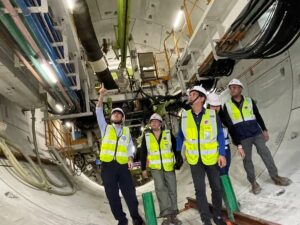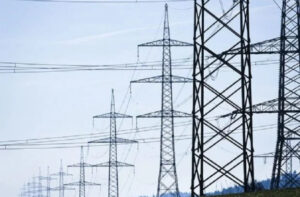Menu
Empowering Women in Asia-Pacific Infrastructure Development

In the diverse landscape of Asia and the Pacific, the vital role of women in infrastructure development is increasingly acknowledged. The Asian Development Bank (ADB), a prominent financial institution dedicated to fostering economic growth in the region, has highlighted the imperative need to integrate gender considerations into the infrastructure sector.
Despite women constituting half of the global population, there exists a significant gender gap in numerous sectors, infrastructure development being a notable example. The ADB, through its insightful blog posts and expert opinions, underscores the urgency of addressing this disparity. The bank’s specialists, including Ichiro Aoki, a principal markets development advisory specialist, Prabhjot Khan, a social development specialist, and Radhika Behuria, a social and gender specialist, emphasize the integration of gender perspectives across all stages of infrastructure development.
This call for gender inclusivity is not just a moral or social issue but also a pivotal economic consideration. The ADB’s specialists point out that ignoring gender disparities often leads to infrastructure designs that fail to accommodate the needs and accessibilities of women. This oversight limits women’s participation and benefits from the infrastructure and its affiliated services.
The ADB’s stance is particularly relevant in the context of post-pandemic recovery efforts in Asia’s developing countries. Physical infrastructure, viewed traditionally as gender-neutral, actually plays a crucial role in supporting not only economic recovery but also in shaping a more resilient and inclusive future. The ADB estimates that an investment of $1.7 trillion annually is required to bridge the infrastructure gap in the region. Given the enormity of this investment, it becomes imperative that infrastructure projects not only address the physical needs of development but also the societal needs, ensuring that the benefits are equitably distributed among all genders.
The concept of public-private partnerships (PPPs) is central to the ADB’s strategy for infrastructure development. PPPs are seen as a vital tool for mobilizing private capital for infrastructure projects. More importantly, the ADB envisions PPPs as a means to expand opportunities and improve the quality of life, especially for women and girls who historically have not benefited equally from infrastructure development. The specialists from ADB advocate for a greater awareness among PPP practitioners to recognize and address barriers that hinder women and girls from accessing and benefiting from these projects.
A significant part of this initiative involves acknowledging women and girls as key stakeholders in infrastructure development. Their perspectives must be incorporated into considerations of access, location, and affordability of infrastructure projects for these initiatives to be truly successful. The ADB argues for a strong economic and business case for integrating a gender perspective, as it enhances the overall usability and longevity of infrastructure and its services.
In this regard, the public sector is urged to take a lead role. Governments are encouraged to establish frameworks that identify gender gaps, develop strategies to address these, and create legal mandates that ensure the inclusion of gender perspectives in infrastructure projects. The private sector, on the other hand, is called upon to contribute its expertise and knowledge to promote women’s access to services and employment opportunities through thoughtful infrastructure design.
The ADB itself, as a multilateral development bank, is committed to providing tools and advice to align public and private interests. It aims to set standards for gender-sensitive market interventions, ensuring that future infrastructure projects in Asia and the Pacific are inclusive and equitable.
By championing gender-inclusive public-private partnerships and embedding gender considerations into every stage of infrastructure development, the ADB believes that the future of infrastructure in Asia and the Pacific will be not only fairer but also economically efficient and socially impactful. This vision resonates with the broader goals of sustainable development and equity, emphasizing that the path to a prosperous future in the region is inherently linked to the empowerment and inclusion of women in all sectors, especially infrastructure development.
#Top Tags COVID Covid-19 Technology Finance Investing Sustainability Economy

Subscribe to Our Newsletter and get a free pdf:



















Comments are closed for this article!